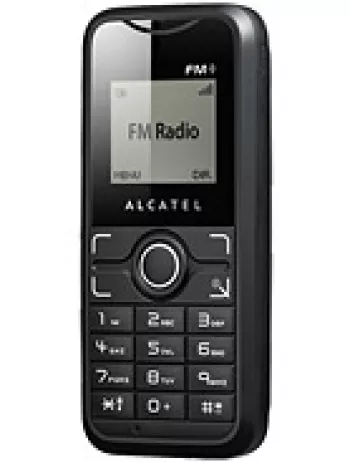
Overview of the Alcatel OT 565
The Alcatel OT 565, announced in the fourth quarter of 2004, represents a classic feature phone from an era when mobile phones were primarily communication tools with basic functionalities. Discontinued now, it was a compact and efficient device designed for users who needed simple calling and messaging capabilities.
Design and Build
The Alcatel OT 565 had a robust design typical of early 2000s mobile phones. It measured 107 x 48 x 21 mm and weighed just 93 grams, making it easily portable. The device featured a Mini-SIM slot, highlighting the standard SIM size used during that era. The compact structure and reliable build quality made it durable and resistant to everyday wear and tear.
Display
Equipped with a CSTN display that supported 65K colors, the Alcatel OT 565 provided a decent visual experience for a feature phone. The display had a resolution of 128 x 160 pixels, accommodating up to 10 lines of text, which was quite impressive for its time. However, it lacked the modern touchscreen interface, relying instead on physical buttons for navigation.
Camera
In terms of photography, the Alcatel OT 565 featured a VGA camera with a resolution of 0.3 megapixels. Although primitive by today’s standards, it allowed users to capture basic images for personal use. The device did not support video recording, which was a common limitation among feature phones of that period.
Memory and Storage
The phone came with an internal memory of 3MB, with no option for expandable storage, which meant users had to manage their files and contacts carefully. The phonebook could store up to 300 entries and supported photo calls, allowing users to attach images to their contacts.
Connectivity
The Alcatel OT 565 supported GSM technology with 2G bands including GSM 900, 1800, and 1900. The lack of modern connectivity options such as Bluetooth, WLAN, and GPS was compensated by GPRS Class 10, sufficient for basic data communication. It had a proprietary USB port for physical connections, limiting compatibility with other devices.
Battery Life
Powered by a removable Li-Ion 800 mAh battery, the Alcatel OT 565 provided decent battery life. It offered standby time of up to 275 hours and a talk time of up to 3 hours, which were considered adequate for a feature phone. The removable battery design allowed users to easily replace it if needed.
Sound and Multimedia
The device lacked a loudspeaker and did not include a 3.5mm headphone jack, which limited its multimedia capabilities. However, it supported vibration alerts and downloadable polyphonic ringtones, offering a degree of customization for call and message notifications. The presence of Java MIDP 2.0 enabled users to download and install various games, enhancing the phone's entertainment options.
Messaging and Internet
The Alcatel OT 565 supported SMS, EMS, MMS, and Email, providing versatile messaging options for its users. Its WAP 2.0/xHTML browser allowed basic internet browsing, giving users access to essential online information and services, a valuable feature for its time, albeit limited in capability.
Miscellaneous Features
Despite the absence of modern sensors and advanced features found in contemporary smartphones, the Alcatel OT 565 included essential functionalities for a feature phone. Users could enjoy downloadable games, and the infrared port offered a wireless data transfer option, a novelty during the early 2000s.
Conclusion
The Alcatel OT 565 serves as a testament to the evolution of mobile technology. It encapsulates the features and limitations of early mobile phones, emphasizing communication efficiency and basic functionality over multimedia capabilities and connectivity. While it pales compared to modern smartphones, it was a practical and reliable device in its day, catering to users who prioritized straightforward communication and durability.
Key Features of Alcatel OT 565
- Compact dimensions: 107 x 48 x 21 mm, weighing 93 g
- Display: CSTN screen with 65K colors and resolution of 128 x 160 pixels
- Phonebook capacity of 300 entries with photo call functionality
- Internal storage of 3MB
- VGA main camera
- Infrared connectivity
- Support for SMS, EMS, MMS, and Email messaging
- WAP 2.0/xHTML, HTML browser capabilities
- Java support with MIDP 2.0
- Removable Li-Ion 800 mAh battery offering up to 275 hours of standby time and up to 3 hours of talk time
Disadvantages of Alcatel OT 565
- Lacks EDGE support for faster internet connectivity.
- Discontinued status, no longer available in the market.
- No expandable memory card slot, limited to 3MB internal memory.
- No video recording capability in the main camera.
- No front selfie camera.
- No loudspeaker; lacks 3.5mm audio jack for headphones.
- No Bluetooth or WLAN for wireless connectivity; limited to infrared.
- No GPS for location services.
- No FM Radio support.
- Uses proprietary USB connection, limiting compatibility with standard cables.

View Also
More Phones
All Rights Reserved +14268 Phones © Mobilawy 2025

























